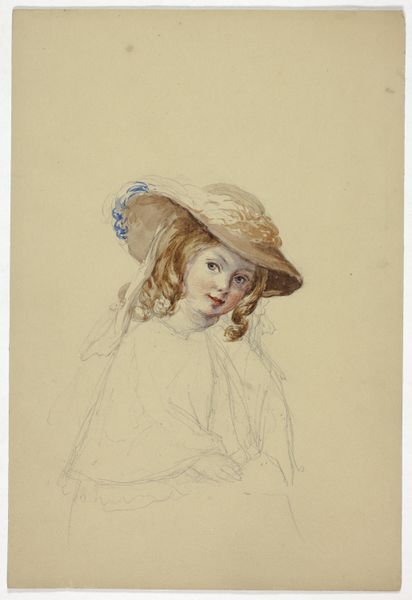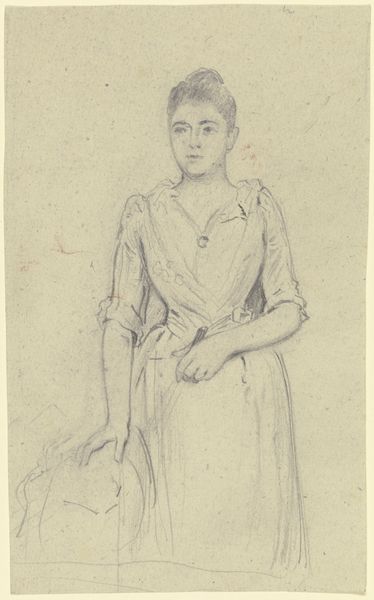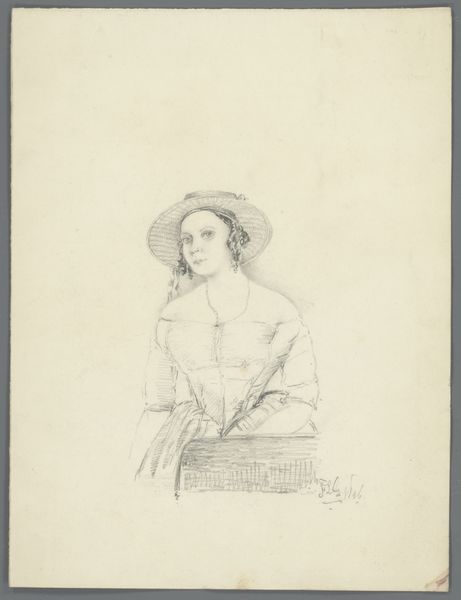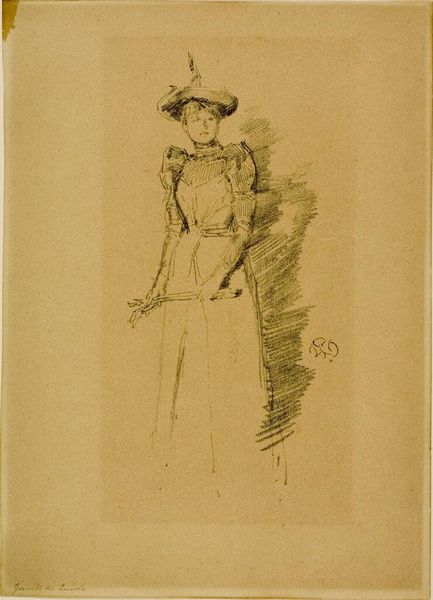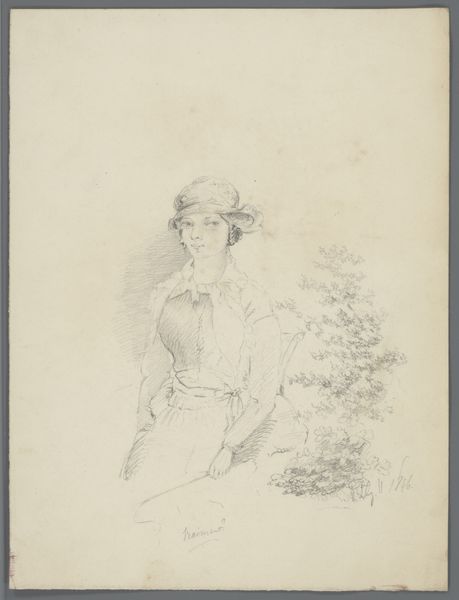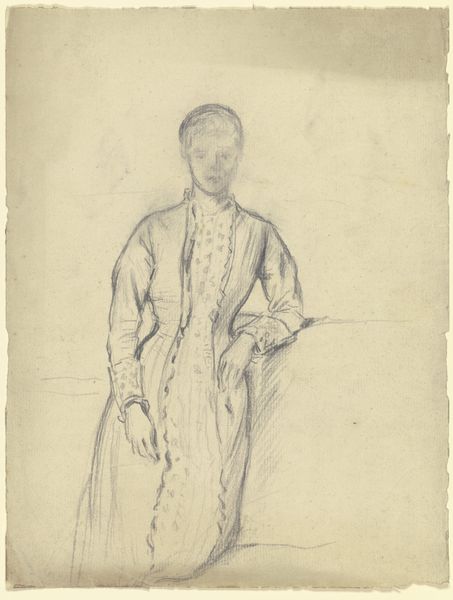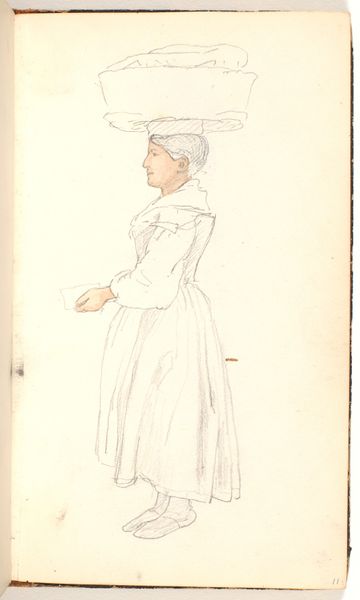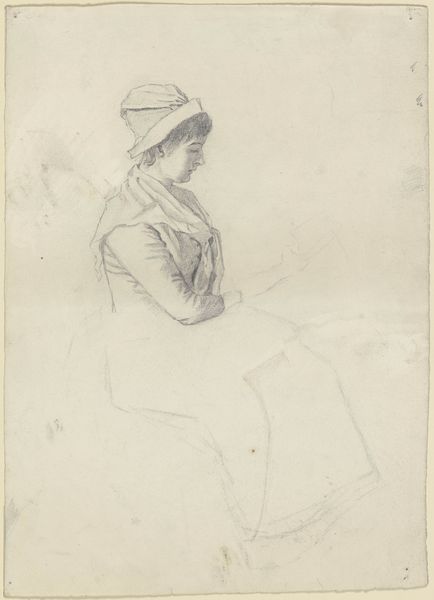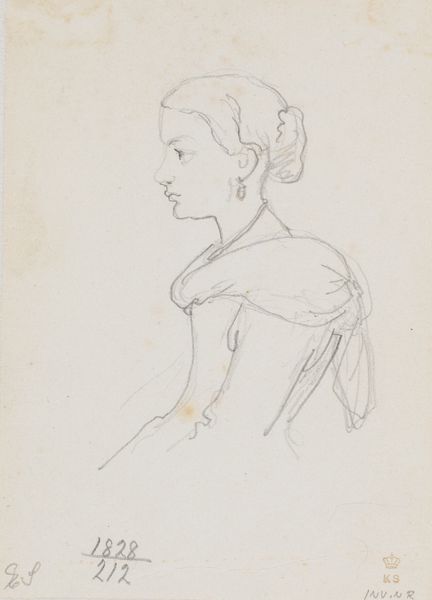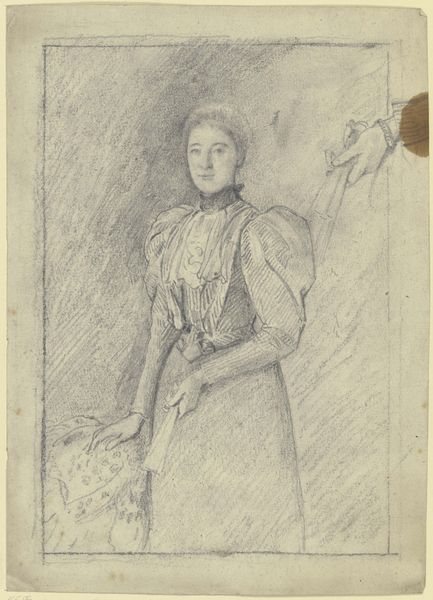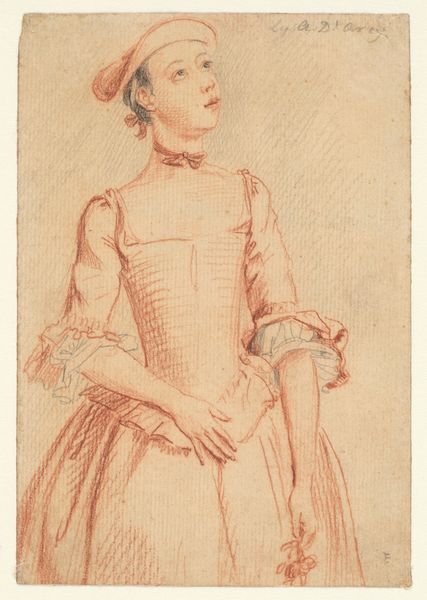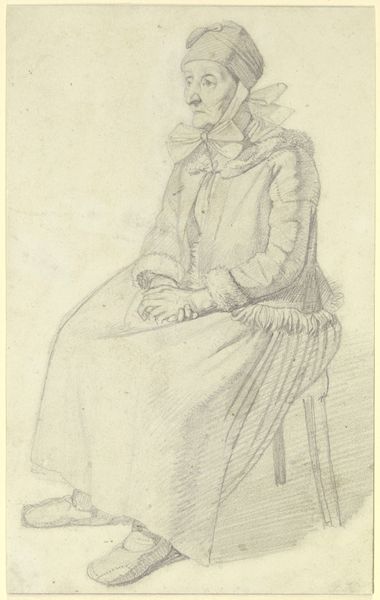
drawing, print, paper, graphite
#
drawing
#
imaginative character sketch
#
toned paper
#
light pencil work
#
childish illustration
# print
#
pencil sketch
#
caricature
#
paper
#
personal sketchbook
#
england
#
men
#
water
#
graphite
#
sketchbook drawing
#
portrait drawing
#
watercolour illustration
Dimensions: 251 mm × 170 mm
Copyright: Public Domain
Editor: This is "Portrait of Young Girl with Hat and Crop," a drawing currently housed at the Art Institute of Chicago. The artist is listed as Elizabeth Murray, and while undated, the work employs graphite and watercolor on paper. I find it striking how delicate and seemingly unfinished it appears, particularly regarding the young girl's attire. What stands out to you? Curator: The sketch, precisely its incompleteness, speaks volumes to me. The materiality is so explicit – the toned paper, the graphite, the tentative washes of watercolor. It foregrounds the *making* of an image, not simply the image itself. Look at the social context embedded: A girl holding a crop in England implies access to land and perhaps a certain social standing. But is it real, or an aspirational projection carefully drawn and rendered? Editor: So, the materials themselves hint at a potential narrative, a commentary perhaps? Curator: Precisely. The 'unfinished' quality could suggest not just a study, but an intentional revealing of the labor and choices involved in constructing such an image. Think about how "high art" often attempts to erase its production, but here, it is front and center. It subtly critiques notions of inherent value and challenges what’s deemed ‘precious.’ What if its true intent was about its creation rather than to produce a commodity for public showing? Editor: That’s really fascinating. It makes me consider the consumption of art in a completely different light, how the art itself becomes an exchangeable item that ignores the process. Curator: Exactly. The value shifts from representation to the tangible history of the drawing itself: who made it, how they made it, what materials were accessible to them, and the context of making something such as art. It gives us insight into more than just the portrait itself. Editor: I definitely see the portrait in a new light now. It feels less like an observation and more like a social commentary about class and materials. Curator: Indeed, that's where the material and its application merge, revealing more than just aesthetics.
Comments
No comments
Be the first to comment and join the conversation on the ultimate creative platform.
